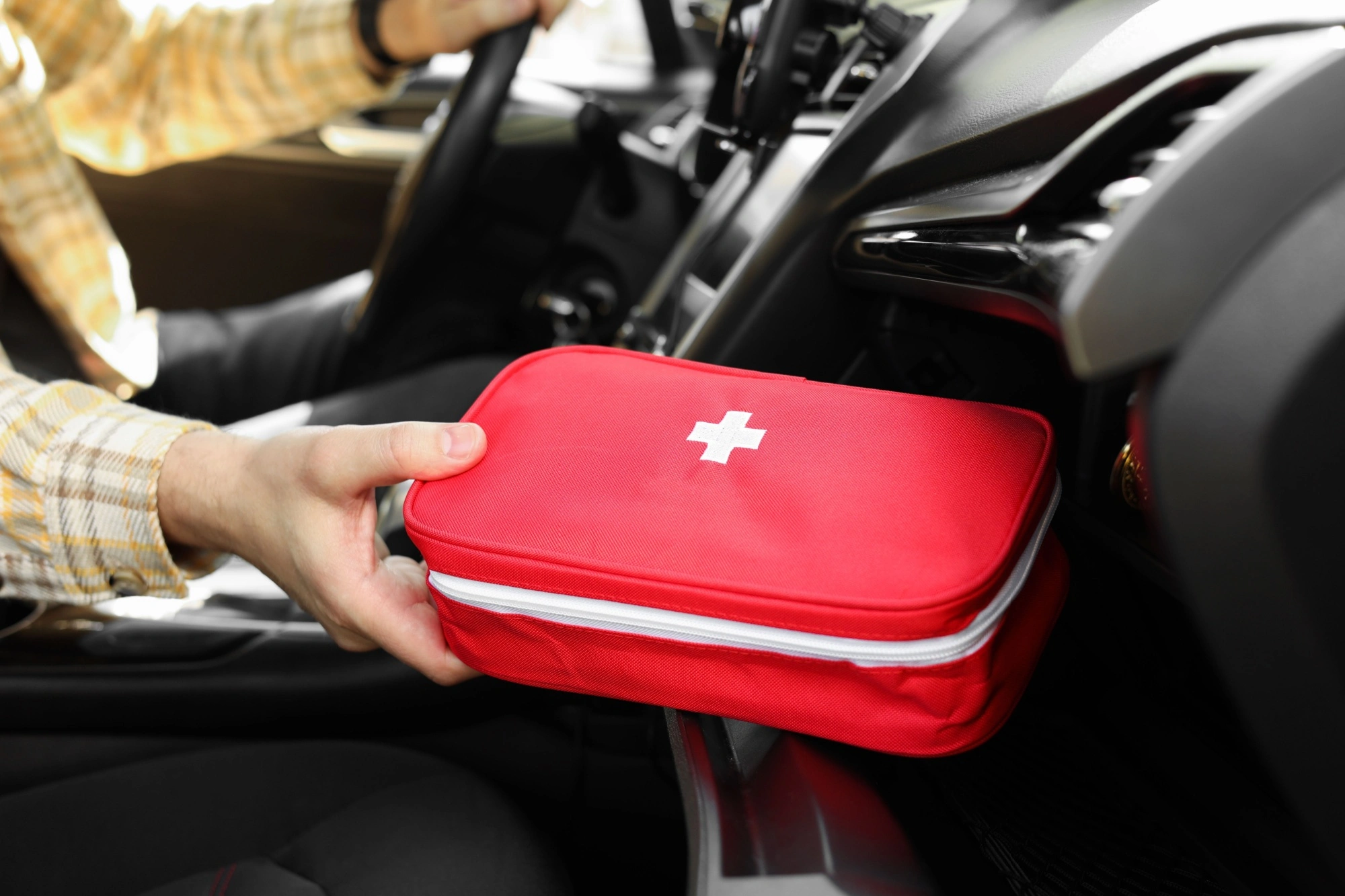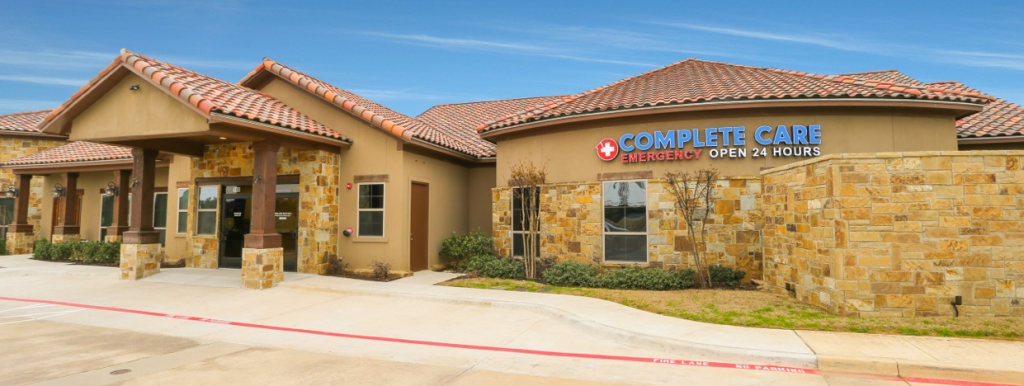How to Be Prepared For Medical Emergencies at Home
Health & Safety Tips
•
Dec 5, 2024
Reviewed by:

While we hope to never face a serious medical situation, the reality is that a variety of emergencies — things like severe allergic reactions, burns, falls, or sudden left side abdominal pain — can happen at any time. According to the CDC, emergency departments in the U.S. handle close to 140 million visits each year, and many of these emergencies first occur at home.
When seconds count, knowing how to prepare for a medical emergency at home can make all the difference. Being prepared means:
- Keeping a well-stocked first aid kit and knowing how to use its contents
- Saving emergency numbers in your phone, including poison control (1-800-222-1222)
- Knowing the locations and routes to the nearest ER
- Having important medical information readily available for all family members
- Taking basic first aid and CPR courses
- Keeping essential medications organized and easily accessible
Remember: If you experience or witness a medical emergency, don’t hesitate to head to the nearest Complete Care freestanding ER location immediately. While home preparation can help, emergency medical professionals are best equipped to handle serious situations. It’s always better to err on the side of caution when it comes to your health and safety.
1. Keep a well-stocked first aid kit
A comprehensive first aid kit for emergencies at home should include both basic supplies and any family-specific needs. Stock your kit with:
- Bandages of various sizes
- Gauze
- Adhesive tape
- Scissors
- Tweezers
- Antiseptic wipes
- Antibiotic ointment
- Over-the-counter pain relievers
Keep a checklist inside the kit and check expiration dates every six months. Store your kit in an easily accessible, dry location and make sure everyone in the household knows where it is. You could also consider having multiple kits — one for your home, car, and any outdoor activity bags, as well as an emergency survival kit.
2. Save emergency numbers in your phone
In an emergency, fumbling through your contacts for the right number can waste valuable time. Instead, try creating a visible list or a shared digital document of essential contacts, including:
- ICE (In Case of Emergency) contacts
- Local emergency department direct lines
- Your family doctor’s office and after-hours numbers
- Poison Control (1-800-222-1222)
- List neighbors or nearby family who can help in emergencies
- Add your pharmacy contact information
For young children or elderly family members, consider printed cards with emergency contacts that they can keep in wallets or backpacks.
3. Know the locations and routes to the nearest ER
First, make a note of the nearest emergency rooms around you and how to get there so that you don’t have to waste time Googling “ER near me.” Second, find out which emergency rooms best serve certain emergencies. For example, some emergency rooms have shorter average wait times or might excel in pediatric care or hypertensive crisis emergencies. Knowing this information prior can help you know where to go in a pinch.
To be prepared, you can:
- Map out routes to at least two different emergency rooms
- Note which options are in your insurance network
- Identify which ERs specialize in specific emergencies (like stroke centers or pediatric emergency care)
- Save these locations in your phone’s GPS
- Practice driving the routes at least once so you’re familiar with them
If you have a chronic condition, research which facilities have experience treating your specific health issues and keep a small emergency bag in your car with basic supplies, insurance information, and some cash for unexpected hospital visits.
4. Have important medical information readily available
Medical emergency preparedness begins with creating an organized, easily accessible health information system. Create a medical information folder or digital document for each family member that includes:
- Current medications and dosages
- Allergies and chronic conditions
- Copies of insurance cards
- Blood types
- Vaccination histories
- List of previous surgeries or major medical events
- Emergency contacts and power of attorney information
It’s a good idea to keep both digital and physical copies of critical medical information. During emergencies, you’ll want multiple ways to access these details.
5. Take basic first aid and CPR courses
First aid knowledge needs regular refreshing and updating. Beyond basic certification, consider scenario-specific medical emergency examples relevant to your lifestyle and find training relating to those.
For example, if you frequently host gatherings, learn the Heimlich maneuver for different age groups. For families who enjoy hiking or outdoor activities, wilderness first aid courses offer specialized knowledge for remote emergencies. Swimming families should consider water safety and rescue courses.
You’ll want to keep your skills fresh by watching reputable online refresher videos and practicing with family members. Create simple emergency response flowcharts to post in your home as quick reference guides.
6. Keep essential medications organized and accessible
Medication management requires a system that’s both organized and flexible, especially for those managing chronic conditions such as diabetes, heart disease, or epilepsy. Your system for managing medications could look like:
- Using labeled pill organizers for daily medications
- Keeping a visible list of medication schedules
- Storing medications in a cool, dry place away from direct sunlight
- Keeping emergency medications (like EpiPens or inhalers) in easily accessible locations
- Setting up medication reminders on your phone
- Maintaining a relationship with a local pharmacy for quick refills
- Keeping track of refill dates and setting up auto-refills when possible
Remember, this preparation system isn’t a one-time setup. Review and update your emergency preparedness plan quarterly. While thorough preparation is essential, never delay seeking professional medical care in an emergency. If you’re unsure about the severity of a situation, it’s always better to have it checked by medical professionals.
Medical emergency examples (and how to handle them)
Diabetes
For patients at risk of a diabetic seizure, create a clearly marked emergency kit with glucose monitoring supplies and fast-acting sugar sources. Keep a master medication schedule that notes not just timing but also specific instructions (like “take with food” or “avoid sunlight”). If you ever need to visit the emergency room for diabetes management, having an organized record of insulin doses and blood sugar readings can be crucial for healthcare providers.
Severe allergies
For those at risk of anaphylactic shock, establish a comprehensive allergy action plan. Keep EpiPens easily accessible and clearly labeled in multiple locations, including home, work, and travel bags. If you need to visit the emergency room for anaphylaxis treatment, bring a detailed log of the allergen exposure and any medications administered. Make sure family members and close contacts know how to recognize signs of severe allergic reactions and are trained in using an EpiPen in case of emergency.
Cardiac conditions
For individuals with heart conditions, maintain a portable file of recent EKGs and cardiac medications. If experiencing chest pain that could signal a heart attack, keeping a clearly marked emergency nitroglycerin kit in an easily accessible location is crucial. When visiting the emergency room for cardiac symptoms, bring a log of recent blood pressure readings and any heart-related episodes. Have a written plan for chest pain that includes when to take prescribed medications and when to call emergency services — and remember, with heart attacks, minutes matter.
When every minute counts, trust Complete Care’s freestanding ERs for your emergency care!
You never know when medical emergencies are going to strike, but you can know exactly where to turn when they do. Complete Care’s freestanding emergency rooms combine the comprehensive capabilities of a hospital ER with shorter wait times and personalized attention. Our facilities are equipped with state-of-the-art technology and staffed by board-certified emergency physicians ready to handle any medical crisis, from severe allergic reactions to cardiac events.
Don’t let uncertainty about where to go add stress to an already challenging situation. Save your nearest Complete Care location (Austin, Corpus Christi, Dallas/Fort Worth, East Texas, Lubbock, San Antonio, and Colorado Springs) in your phone now, and rest assured knowing that professional emergency care is always just minutes away.
More Helpful Articles by Complete Care:
- The Dangers of Poorly Managing Stress During the Holidays
- When Does RSV Virus and Rash Appear?
- How Long Does Measles Last?
- Toxic Shock (TSS) Syndrome Signs
- What to Expect at a Standalone ER Visit
